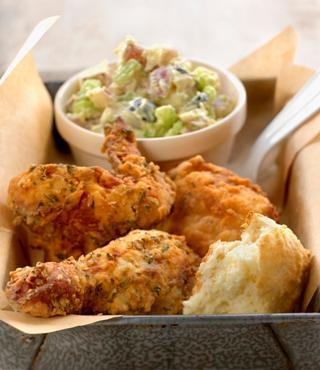Lesson Plan: Oils
06 September 2010Courtesy of Dow AgroSciences LLC
 A Guide to Choosing What’s Right for Your Kitchen
A Guide to Choosing What’s Right for Your Kitchen
Educators today often lack three key ingredients to a successful program: time, energy and resources. Each school year and curriculum offers a host of opportunities to discuss a variety of topics, but educators are charged with presenting students with the most important, useful and applicable information in a short period of time.
Today, some foodservice and food-processing companies are recognizing these needs and are investing their time, energy and resources to supporting culinary educators with the tools needed to provide their students with current and applicable information as they enter the workforce. One such company, Dow AgroSciences, saw a need for these tools and decided to help culinary educators provide their students with information and expertise from Dow AgroSciences’ Omega-9 Oils team.
In 2009, the Center for the Advancement of Foodservice Education (CAFÉ) conducted a survey among culinary educators and found that 99% of those surveyed think it’s important for students to understand the applications and health aspects for cooking oils—due largely to recent trans-fat legislation and general consumer awareness of fats and oils. However, with limited time in course curricula and resources on the topics, culinary educators indicated they were unable to spend the time they would like on oils education.
In response, culinary and oil experts from the Omega-9 Oils team developed a simple program consisting of a lesson plan, kitchen-friendly resources and a PowerPoint presentation. These materials explore and explain oils’ uses in menus and kitchens based on their taste, health and performance characteristics. To help train the trainers and educate students, the Omega-9 Oils team worked with a former chain-restaurant culinary director who attended various professional culinary-training programs throughout the United States, having interactive discussions and conducting tastings with various cooking oils.
One of the schools he attended was Johnson & Wales University in Denver. Approximately 400 culinary students attended the presentation, examined sources of oils, tasted various oils and participated in interactive discussions. John Woolley, director of culinary operations at Johnson & Wales’ Denver campus, believes it’s important for students to learn from culinary leaders and experts in the foodservice field.
“Our university welcomes opportunities to bring in industry leaders who have relevant and engaging knowledge to share,” said Woolley. “Students get a new perspective on the industry, and industry leaders get a chance to learn about what’s important to future culinary leaders.”
To provide additional culinary educators with the tools they need to continue enrichment in their own classroom, the Omega-9 Oils team also provided a lesson plan and teaching guide, PowerPoint presentation and an oil “cheat sheet” and comparison chart that compares the taste, health and performance attributes of oils.
“Cooking oils are no longer a commodity item, but an ingredient that plays an important role in the health and taste of today’s menus,” said David Dzisiak, Healthy Oils Global Commercial Leader at Dow AgroSciences. “We’re happy to share our industry knowledge to educate tomorrow’s culinary leaders about the benefit of healthier foods and healthier businesses.”
And now you can too. This lesson plan (see download below) is a 90-minute primer on the health benefits, taste, performance and application of different types of cooking oils. It is designed to be an interactive course applying various types of educational activities, including instructor presentation, discussion, demonstration, hands-on exploration and student interactions.
Some of the delivery methods suggested in the curriculum are optional depending on availability of equipment, classroom layout and time allotted for the course. The primary purpose of this course is to enable culinary students and others to make informed decisions regarding cooking oil purchases and applications.
After taking this course, students will:
- Be aware of consumer and legislative trends and their impact on the foodservice industry.
- Understand the health benefits, taste, performance and application of various cooking oils.
- Be able to make informed decisions when selecting cooking oils to use for specific applications.
- Be able to make purchasing decisions based on both food quality and cost.
Visit http://www.cafemeetingplace.com/cafevision/frying-videos.html for helpful instructional videos provided by Dow AgroSciences, whose Omega-9 Canola and Sunflower Oils represent the “next generation” of food-industry oils.
Downloads
